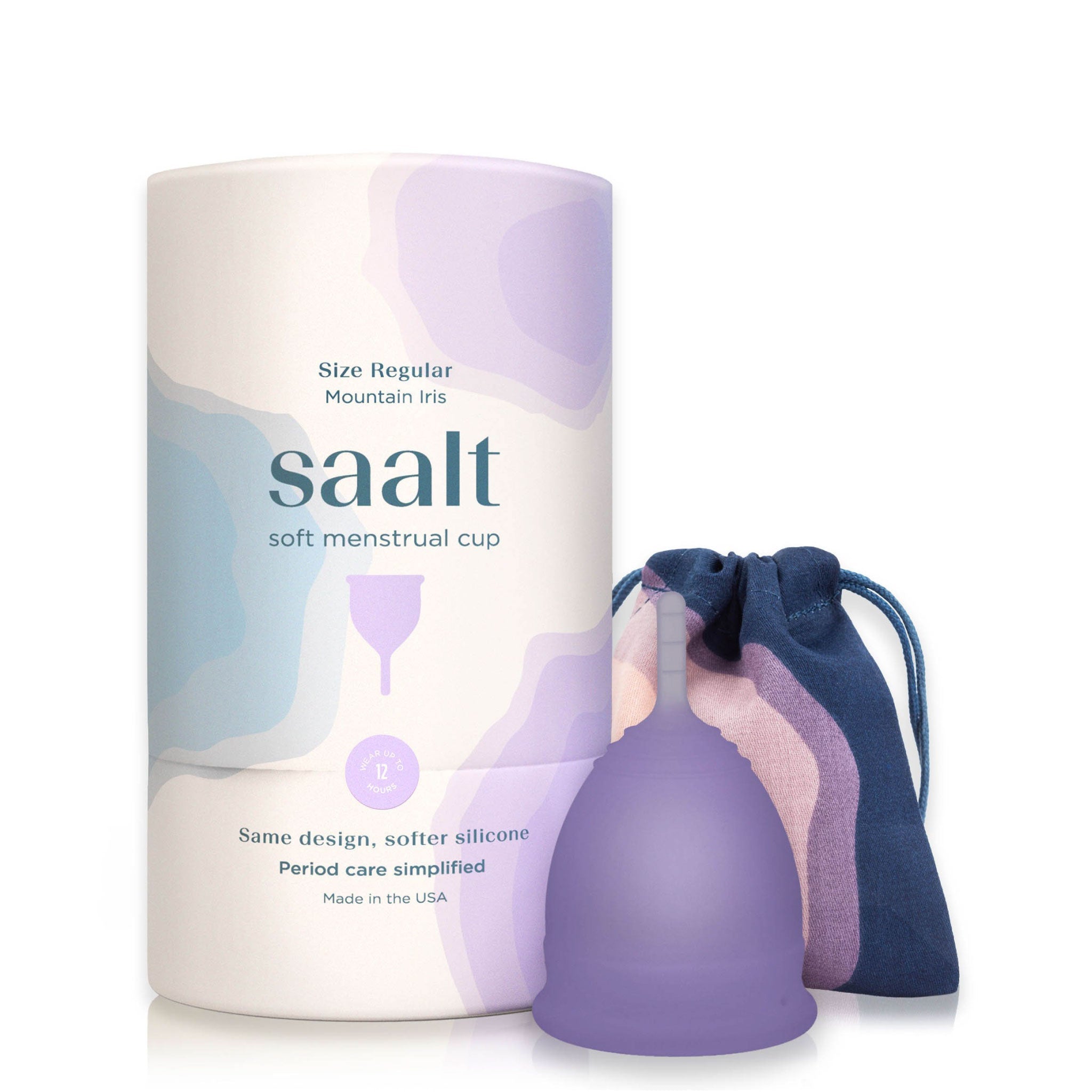Hey you 💛 — let’s talk periods. We know, not exactly everyone's favorite topic, but it’s something most of us navigate every month, and honestly, the more we understand our options, the better we can take care of our bodies.
You’ve probably heard about menstrual discs — maybe from TikTok, or that one friend who swears by them — and if you're curious about how they stack up against tampons, you're in the right place. We’re breaking it all down in a real-talk kind of way so you can decide what might work best for you.
What Even Is a Menstrual Disc?
A Quick Intro to the Disc
So, first things first: a menstrual disc is a flexible, bowl-shaped device made from medical-grade materials (usually silicone or polymer). It’s designed to sit at the base of your cervix, collecting menstrual fluid rather than absorbing it like a tampon.
Picture a soft disc the size of a small cookie, with a rim that helps it stay in place and a basin that collects blood. That’s essentially what you’re working with. It’s not the same as a menstrual cup — different shape, different position, different vibe.
Tampons: The Tried-and-True Option
A Recap, Just in Case
Tampons are cylindrical, absorbent products made to soak up menstrual blood. They go inside your vaginal canal and expand to fit as they absorb fluid. They’ve been a period go-to for decades, largely because they’re discreet, easy to use, and available pretty much everywhere.
They come in different absorbency levels — light to ultra — and can include applicators or be inserted manually.
The Big Differences: Menstrual Disc vs. Tampon
Let’s get into the details — what actually makes these two products different?
1. Where They Sit in the Body
-
Tampons sit in the vaginal canal, about mid-way in.
-
Menstrual discs sit higher up, in the vaginal fornix, which is just below your cervix.
This difference in placement affects a lot of things: comfort, capacity, and even how the product feels during movement or intimacy.
2. How They Collect Menstrual Fluid
-
Tampons absorb blood directly.
-
Discs collect it in a flexible reservoir.
This means discs don’t dry you out like tampons can. Tampons, especially high-absorbency ones, can sometimes mess with your natural vaginal moisture, which is why some people feel itchy or dry after using them.
3. Capacity and Wear Time
-
A super tampon holds about 12–15 ml of blood.
-
A menstrual disc can hold up to 70 ml, depending on the brand.
That’s a huge difference, especially if you have a heavy flow. Most tampons should be changed every 4–8 hours, while a disc can be worn up to 12 hours. Yes, really. No running to the bathroom every few hours.
4. Insertion and Removal
Here’s where things can feel a bit intimidating — but don’t worry, you get the hang of it quickly.
-
Tampons (especially with applicators) are pretty beginner-friendly.
-
Discs take a little learning curve. You pinch the sides, insert it horizontally, and then tuck it up behind your pubic bone. To remove, you hook your finger under the rim and pull it out gently.
It can be messy at first for some people, but once you learn the technique, it gets smoother.
5. Comfort and Sensation
-
Tampons are usually comfortable if inserted correctly, but you might feel them if they're too dry or not in far enough.
-
Discs, once in place, are generally not noticeable at all. Some people forget they’re even wearing one.
Because discs sit higher and mold to your shape, they’re less likely to cause that weird “tampon pressure” some people experience.
6. Leak Protection
This one’s a little mixed:
-
Tampons can leak if they’re saturated or not changed often enough.
-
Discs have higher capacity and often leak less — but if they’re not inserted right, they can shift.
Some brands of discs even have anti-leak features built into the rim. Bonus!
7. Sex While Wearing One
Yep, we’re going there.
-
Tampons? No. Just no. Not safe or comfortable.
-
Discs? Yes — many people say you can have mess-free sex with one in, because it sits out of the way.
It won’t be ideal for everyone, and it depends on your body and the partner, but it’s an option that tampons just don’t offer.
The Pros and Cons
Let’s lay it all out — no sugarcoating.
🩸 Menstrual Discs: Pros
-
Wear for up to 12 hours
-
Holds more fluid (great for heavy flows)
-
Doesn’t cause dryness
-
Potential for mess-free period sex
-
Eco-friendly (reusable versions available)
🩸 Menstrual Discs: Cons
-
Insertion/removal learning curve
-
Can be messy at first
-
Not widely available in all stores, (but widely available online!)
-
Can be intimidating if you’re not used to internal products
🧷 Tampons: Pros
-
Widely available
-
Easy to use (especially with applicators)
-
Subtle and portable
-
Familiar for most people
🧷 Tampons: Cons
-
Lower capacity
-
Can cause vaginal dryness
-
Need to be changed more often
-
Can’t be worn during penetrative sex
-
Risk of TSS (Toxic Shock Syndrome) if not used properly. Learn more: What causes TSS.
-
And let’s be honest, your grandma used these
Helpful Articles About Menstrual Discs:
12 Things You Should Know About Menstrual Discs.
Am I Still a Virgin If I Use a Menstrual Disc or Cup?
Autodumping or Self-Emptying: Menstrual Discs Explained.
Are Menstrual Discs Safe?
Yes — totally safe when used as directed. Discs are made from medical-grade materials and are FDA-compliante and registered. Just like any menstrual product, hygiene is key. Wash your hands before insertion and removal, clean reusable discs thoroughly, and replace disposable ones as directed.
Also, TSS is extremely rare with discs, especially compared to tampons, since they don't absorb fluid or disrupt your vaginal flora.
Who Might Love a Menstrual Disc?
Let’s paint a few profiles:
-
You have a heavy flow and want longer wear time
-
You’re over leaks and want to try something with higher capacity
-
You’re curious about body-safe, reusable options
-
You want to explore mess-free period sex
-
You’re sensitive to the drying effect of tampons
Sound like you? Then a menstrual disc might be so worth trying.
Tips for First-Timers
If you’re thinking about trying one, here are some gentle words of wisdom — from some people who have been there:
-
Practice when you’re not rushed. Try it at home on a lighter day so you’re not stressed about leaks.
-
Use a mirror the first few times. It helps you understand what’s going where.
-
Don’t be discouraged if it takes a few tries. It’s a new skill, like riding a bike.
-
Get a duo set. They come in different sized, and one size might work better over another on varying days of your period. Options are golden.
Learn: How to insert a menstrual disc
Okay, So Which One Is Better?
Here’s the honest truth: there’s no one-size-fits-all answer. It totally depends on your body, your lifestyle, and what you’re comfortable with.
Some people swear by tampons because they’re quick and familiar. Others make the switch to discs and never look back. And honestly, plenty of people use both depending on the day or activity.
You do not have to pick a side. You’re allowed to try things out, change your mind, and do what works best for you. That’s real empowerment.
Make the Switch: Give Yourself Permission to Explore
Trying a new menstrual product can feel a little scary — especially when it’s something that requires a new technique or gets a little messy. But that’s okay. You don’t have to be perfect at it. You just have to be willing to learn and listen to your body. And remember, there’s always period underwear for backup as you try your new disc.
Whether you stick with tampons, try a disc, or find a whole new routine that makes periods easier for you, what matters is that you feel informed and in control.
Because knowledge? That’s what makes us powerful.






